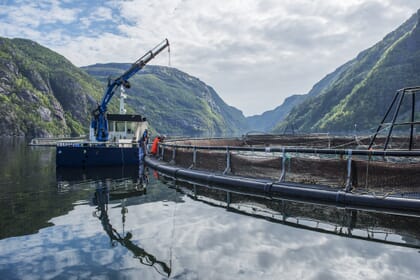
“Chemical based bath treatments that are released into the fjords is one of the biggest objections to the salmon farming industry. CleanTreat solves this environmental challenge,” says Malcom Pye, CEO of Benchmark.
The solution can be applied during delousing on regular well boats.
Prevents resistant sea lice
“CleanTreat is a purification unit that removes all medical components from the water before it is released back into the sea. It also prevents all removed lice from returning to the sea, so that they will not spread resistance to the treatments,” says Pye.
The solution will continuously be developed further together with the industry. The next step is scalable trials in partnership with Norwegian salmon farming companies. CleanTreat can be used with most licensed bath treatments.
A tool box with sea lice solutions
The aquaculture industry needs various solutions to be able to keep low levels of sea lice.
“The future lies in preventative methods against sea lice, and Benchmark is currently developing such solutions,” says Pye.
“However, CleanTreat makes it possible to use medical treatments without affecting the environment in situations where it is necessary, and until we have developed sufficient preventative methods,” he continues.
A holistic approach to the challenges
Benchmark first started working with the aquaculture industry in 2004 through Fish Vet Group. Salmobreed, Stofnfiskur and INVE are also part of the Benchmark group. The aim is to find sustainable solutions to the industry’s challenges.
“We have great faith in aquaculture as an important and efficient source for food in the decades to come. We are tackling the industry’s challenges from many angles, such as breeding and genetics, fish health, advanced nutrition and knowledge services. That gives us the opportunity to find holistic solutions,” Malcom Pye states.
He is optimistic regarding the industry’s future.
“Aquaculture is a young industry. In our work with the agriculture sector we have also seen challenges that looked impossible at first glance. However, there are always solutions. It is only a question of time before we find them,” says Pye.


